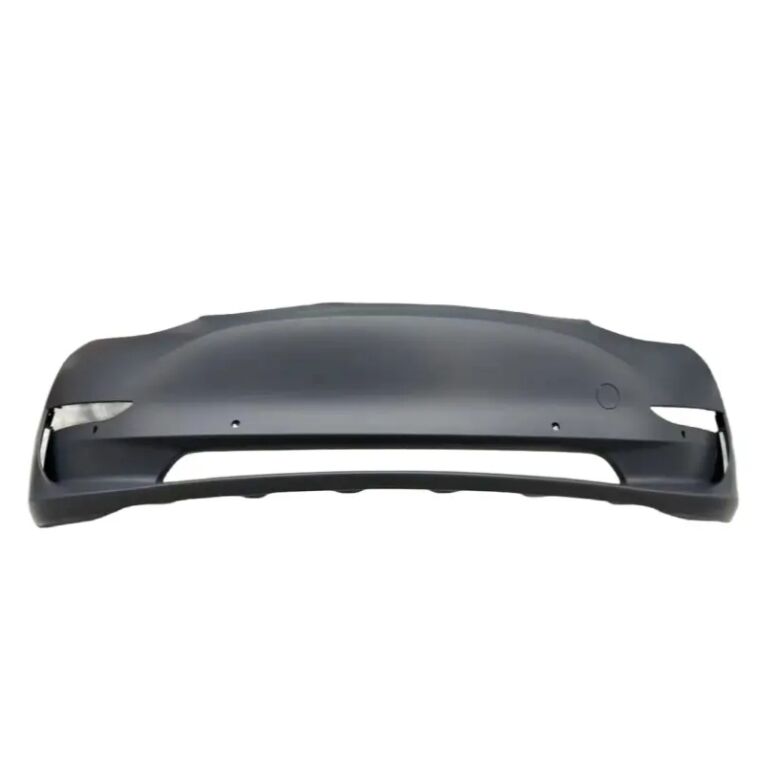Comprender o papel crítico dos sistemas de protección trasera no automobilismo
O parachoques trasero actúa como un dos compoñentes de seguridade e estruturais máis esenciais de calquera vehículo. Aínda que moitos conductores o vexan simplemente como un elemento estético, esta característica automotriz resistente desempeña múltiples funcións cruciais para protexer tanto o vehículo como os seus ocupantes. Desde absorber a enerxía do impacto durante colisións ata proporcionar puntos de montaxe para varios accesorios, o parachoques trasero representa unha peza sofisticada de enxeñería que evolucionou significativamente ao longo de décadas de desenvolvemento automotriz.
Os parachoques traseiros modernos están deseñados coidadosamente tendo en conta tanto a forma como a función, incorporando materiais avanzados e zonas de deformación que axudan a xestionar as forzas de colisión de forma eficaz. A medida que os vehículos seguen gañando sofisticación, os parachoques traseiros adaptáronse para acomodar novas tecnoloxías como sensores de aparcamento, cámaras de marcha atrás e incluso sistemas de radar para características avanzadas de axuda ao condutor.
A Enxeñaría detrás do deseño dos parachoques traseiros
Innovación nos materiais e absorción do impacto
Os parachoques traseiros contemporáneos utilizan unha combinación de materiais seleccionados coidadosamente polas súas propiedades específicas. A capa exterior consiste xeralmente en termoplástico resistente ou plástico pintado que resiste rascos lixeiros e danos provocados polo tempo, mantendo unha aparencia atractiva. Debajo desta capa exterior, barras de reforzo de aceiro de alta resistencia e estruturas de espuma ou panal que absorben a enerxía traballan conxuntamente para xestionar as forzas de colisión.
Os enxeñeiros realizan probas exhaustivas para garantir que os parachoques traseiros cumpran os estritos estándares de seguridade, optimizando o peso e o custo. Os materiais deben equilibrar a durabilidade coa flexibilidade, permitindo que o parachoques absorba a enerxía do impacto sen engadir un peso excesivo ao vehículo. As técnicas modernas de fabricación permiten crear parachoques máis lixeiros e resistentes ca as súas versións históricas.
Integración Estrutural e Soporte
O sistema de parachoque traseiro esténdese lonxe alén do compoñente exterior visible. Intégrase co marco do vehículo a través de puntos de montaxe e caixas de choque deseñados coidadosamente para axudar a distribuír as forzas de impacto. Esta integración estrutural garante que o parachoques poida protexer de xeito efectivo os compoñentes críticos do vehículo, incluído o sistema de combustible, o maleiro e os paneis da carrocería traseira.
As estruturas adicionais de reforzo dentro do conxunto do parachoques axudan a manter a integridade estrutural do vehículo durante varios tipos de colisións. Estes compoñentes funcionan conxuntamente para crear zonas de deformación progresiva que absorben e disipan a enerxía do impacto dunha maneira controlada.

Caracterísiticas de seguridade e capacidades de protección
Xestión da enerxía de colisión
Unha das funcións principais dun parachoques traseiro é xestionar a enerxía de colisión durante os impactos. O sistema de parachoques está deseñado para absorber e distribuír a forza dos impactos a baixa velocidade, evitando danos en compoñentes máis críticos do vehículo. Nas colisións a alta velocidade, o parachoques inicia unha secuencia de deformación controlada que axuda a protexer aos ocupantes do vehículo.
As capacidades de absorción de enerxía dos parachoques traseiros son especialmente importantes para evitar accidentes de tipo underride, nos que vehículos máis pequenos poderían escorregar baixo vehículos máis grandes durante unha colisión. Moitos vehículos comerciais requiren ter gardas especiais contra o underride integradas nos seus sistemas de parachoque traseiro por esta razón.
Integración cos sistemas modernos de seguridade
Os parachoques traseiros modernos actúan como puntos de montaxe para varias funcións de seguridade e comodidade. Sensores de aparcado, cámaras de marcha atrás e módulos de radar para sistemas avanzados de axuda á condución adoitan integrarse na estrutura do parachoque. Estas tecnoloxías dependen da posición precisa e da protección proporcionada polo conxunto do parachoque para funcionar de xeito efectivo.
O deseño do parachoque tamén debe acomodar estes compoñentes electrónicos mentres mantén as súas funcións protetoras principais. Isto levou a deseños de parachoques cada vez máis sofisticados que incorporan puntos de montaxe dedicados e carcacas protetoras para equipos sensibles.
Consideracións sobre Mantemento e Coidado
Inspección Regular e Avaliación de Danos
Mantener a integridade dun parachoques traseiro é crucial para garantir a súa efectividade continuada. As inspeccións regulares deben verificar sinais de danos, incluíndo rachaduras, abolladuras ou desalixe que poidan comprometer as capacidades protetoras do parachoques. Incluso danos menores poden afectar a capacidade do parachoques para xestionar axeitadamente as forzas de colisión.
Recoméndase unha avaliación profesional despois de calquera colisión, xa que o dano ao sistema do parachoques pode non ser sempre visible desde o exterior. Danos ocultos nos puntos de montaxe ou nas estruturas internas poderían reducir a efectividade do parachoques en incidentes futuros.
Directrices para Reparación e Substitución
Cando se produce un dano, débense seguir os procedementos adecuados de reparación ou substitución para manter as capacidades protectoras do parachoques. Os sistemas modernos de parachoques requiren con frecuencia coñecementos e equipos especializados para unha reparación axeitada, o que fai esencial o servizo profesional. A complexidade dos sistemas integrados de seguridade e sensores engade outra capa de consideración ás decisións de reparación.
As pezas de substitución deben cumprir ou superar as especificacións do equipo orixinal para garantir o seu funcionamento correcto e a seguridade. Isto inclúe usar materiais adecuados e seguir os procedementos de instalación especificados polo fabricante para manter a integridade de todo o sistema do parachoques.
Preguntas frecuentes
Como difire un parachoques traseiro dun dianteiro?
Aínda que os parachoques dianteiros e traseiros teñen funcións protetoras, están deseñados de xeito diferente debido aos distintos escenarios de colisión e aos requisitos reguladores. Os parachoques traseiros adoitan incorporar distintos sistemas de sensores e poden ter diferentes requisitos de altura, especialmente para vehículos comerciais con protección contra impactos por debaixo.
Pode repararse un parachoque traseiro danado en lugar de substituílo?
Os danos estéticos leves nos parachoques traseiros poden ser reparados con frecuencia, pero os danos estruturais significativos requiren xeralmente a substitución para garantir o correcto funcionamento de seguridade. A decisión entre reparar e substituír debe basearse nunha avaliación profesional do alcance dos danos e do deseño específico do parachoque.
Que papel desempeña o parachoque traseiro na aerodinámica do vehícuo?
Os parachoques traseiros modernos están deseñados tendo en conta a aerodinámica, xa que axudan a xestionar o fluxo de aire arredor da parte traseira do vehícuo. Isto pode mellorar a eficiencia do combustible e a estabilidade do vehícuo a velocidades máis altas, mantendo as súas funcións protetoras principais.

